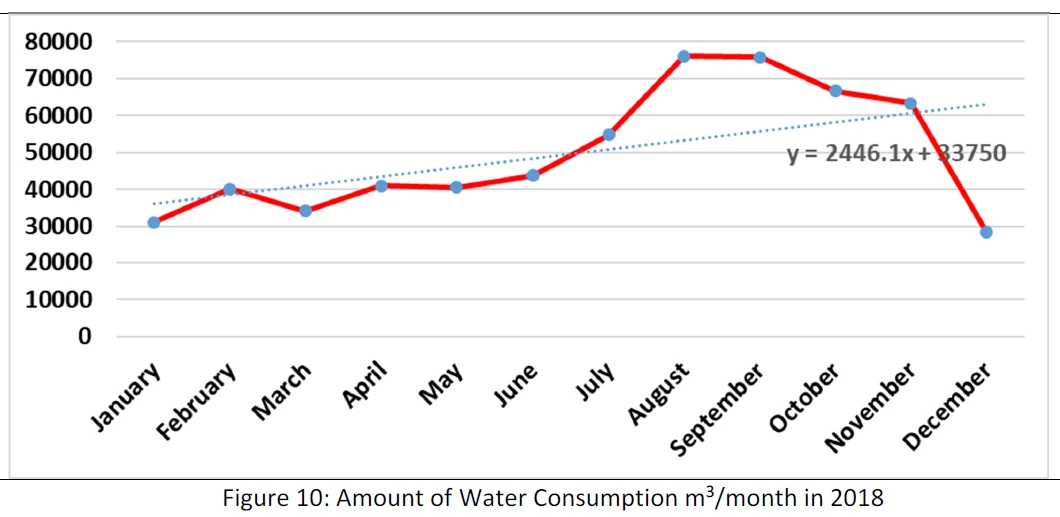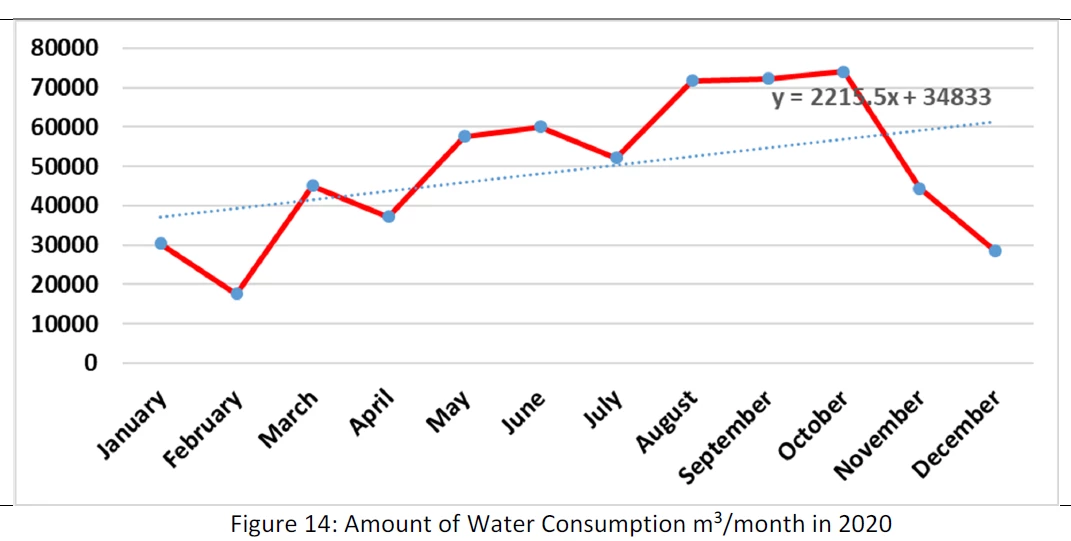
Full report available at Carbon Footprint Estimation and Reduction in the AASTMT Campus Towards developing a Model for Promoting Sustainable Development Goals (Green Campus)
The main objective of the study is to calculate a transparent carbon footprint of AASTMT’s Abu Kir campus from 2018 to 2021, identify the role of COVID-19 on the carbon footprint of AASTMT. The project aimed to establish a framework for ongoing monitoring and reporting of water consumption, both yearly and monthly, which can help to mitigate climate change by reducing AASTMT’s greenhouse gas emissions. Additionally, the study aims to strengthen the university’s finances for the long term by permanently reducing its carbon-based energy sources (including those from water demand) and provide a replicable model and methods that other higher education institutions can adopt in the MENA region to calculate and evaluate their own carbon emissions. The primary objective of this project was to estimate the carbon footprint of AASTMT and identify areas for improvement:
The report provides a detailed analysis of water consumption and resulting carbon emissions in AASTMT. It includes data on water consumption for each year from 2018 to 2021, as well as figures and tables that illustrate the trends in water consumption and carbon emissions over time. For example, the figures below shows the total amount of water consumption in cubic meters per year, as well as a visualization the monthly water consumption and resulting emissions for each year individually. The graphs exhibit variations in water consumption and emissions throughout the year, which can be attributed to various factors such as the academic calendar, weather, and specific events or activities on campus. The report also presents figures that show the emissions resulting from water consumption,which displays the calculated emissions (in kg CO2e/year) from water consumption in 2018. In addition, the report highlights various measures that have been implemented to reduce water consumption and associated carbon emissions on campus, such as the installation of water-efficient fixtures and the implementation of water conservation campaigns.
It is clear that 2019-2020 record the highest water consumptions. These higher rates correspond with the establishment of the College of Pharmacy and expansions at the Gas Hotel, both of which increased the demand for water.
The figures below are used to visualize the monthly water consumption and resulting emissions for each year individually. The graphs exhibit variations in water consumption and emissions throughout the year, which can be attributed to various factors such as the academic calendar, weather, and specific events or activities on campus.

 |
 |
 |
 |
The following recommendations are based on the study:
The AASTMT's commitment to the Race to Zero initiative and its pledge to be net-zero carbon by 2050, with a 50% reduction in emissions by 2040, present a clear and ambitious roadmap for the Academy's future sustainability efforts. The findings of this carbon footprint assessment underscore the necessity and urgency of implementing targeted strategies to meet these commitments. In light of this, the following recommendations are proposed: